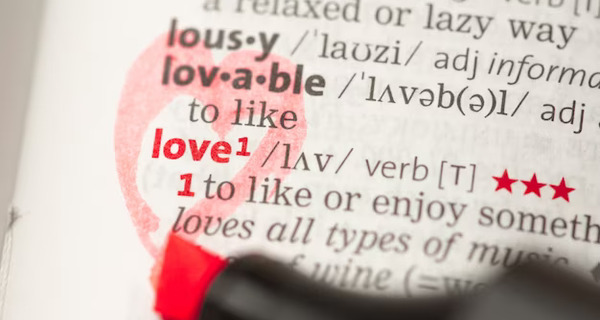-
Table of Contents
- Introduction
- How to Identify Your Partner’s Love Language and Use It to Strengthen Your Relationship
- How to Communicate Effectively When Your Love Languages Don’t Match
- How to Show Love and Appreciation When Your Love Languages Are Different
- Tips for Compromising When Your Love Languages Are Different
- How to Overcome Challenges When Your Love Languages Are Different
- Conclusion
“Unlock the Key to a Lasting Relationship: Learn to Speak Each Other’s Love Language!”
Introduction
When it comes to relationships, understanding and respecting each other’s love languages is essential for a healthy and successful relationship. Love languages are the ways in which we express and receive love. Everyone has a different love language, and it’s important to recognize and understand each other’s love language in order to make the relationship work. In this article, we will discuss the five love languages and how to deal with different love languages in a relationship. We will also provide tips on how to communicate effectively and how to show love and appreciation for each other. By understanding and respecting each other’s love language, couples can create a strong and lasting relationship.
How to Identify Your Partner’s Love Language and Use It to Strengthen Your Relationship
When it comes to relationships, understanding your partner’s love language is essential for creating a strong bond. Love languages are the ways in which we express and receive love. Everyone has a unique love language, and understanding your partner’s can help you to strengthen your relationship. Here are some tips on how to identify your partner’s love language and use it to strengthen your relationship.
1. Observe Your Partner’s Actions: Pay attention to the way your partner expresses their love. Do they often give you gifts or do they prefer to spend quality time with you? Do they like to show their affection through physical touch or do they prefer to express their love through words? Observing your partner’s actions can help you to identify their love language.
2. Ask Your Partner: If you’re still unsure of your partner’s love language, it’s best to ask them directly. Ask them what makes them feel loved and appreciated. This will help you to understand their needs and how they prefer to receive love.
3. Speak Your Partner’s Love Language: Once you’ve identified your partner’s love language, it’s important to speak it. If your partner’s love language is physical touch, make sure to give them hugs and kisses often. If their love language is words of affirmation, make sure to tell them how much you appreciate them.
4. Show Appreciation: Showing appreciation for your partner’s love language is essential for strengthening your relationship. If your partner’s love language is acts of service, make sure to thank them for all the things they do for you. If their love language is quality time, make sure to set aside time to spend together.
By understanding and speaking your partner’s love language, you can create a strong bond and strengthen your relationship. Identifying your partner’s love language can be a challenge, but it’s worth the effort. With a little bit of patience and understanding, you can create a loving and lasting relationship.
How to Communicate Effectively When Your Love Languages Don’t Match
When it comes to relationships, communication is key. But when your love languages don’t match, it can be difficult to communicate effectively. Love languages are the ways in which we express and interpret love. They include words of affirmation, acts of service, receiving gifts, quality time, and physical touch. If you and your partner have different love languages, it can be difficult to understand each other’s needs and wants.
Fortunately, there are some steps you can take to ensure effective communication even when your love languages don’t match.
First, it’s important to understand your own love language. Take some time to reflect on how you express and interpret love. Do you prefer words of affirmation? Acts of service? Receiving gifts? Quality time? Physical touch? Once you understand your own love language, it will be easier to understand your partner’s.
Second, talk to your partner about their love language. Ask them how they express and interpret love. Listen to their answers and try to understand their perspective. This will help you to better understand their needs and wants.
Third, be open to compromise. If your love languages don’t match, it’s important to be open to compromise. Find ways to meet each other’s needs and wants. For example, if your partner’s love language is physical touch and yours is words of affirmation, you could compromise by giving them a hug and telling them how much you appreciate them.
Finally, be patient and understanding. It can take time to learn how to communicate effectively when your love languages don’t match. Be patient with yourself and your partner as you both learn how to express and interpret love in a way that works for both of you.
Communicating effectively when your love languages don’t match can be challenging, but it is possible. By understanding your own love language, talking to your partner about theirs, being open to compromise, and being patient and understanding, you can ensure effective communication in your relationship.
How to Show Love and Appreciation When Your Love Languages Are Different

When it comes to expressing love and appreciation, it can be difficult when your love languages are different. Love languages are the ways in which we express and receive love, and they can vary from person to person. While it may be challenging to bridge the gap between two different love languages, it is possible to show love and appreciation in a way that is meaningful to both parties. Here are some tips for how to show love and appreciation when your love languages are different.
1. Communicate openly and honestly. Communication is key when it comes to expressing love and appreciation. Talk to your partner about your love languages and how you both can express love in a way that is meaningful to both of you. Ask questions and be open to hearing their perspective.
2. Find common ground. Even if your love languages are different, there may be some common ground that you can both agree on. For example, if one of you loves physical touch and the other loves words of affirmation, you can both agree to give each other hugs and compliments.
3. Show appreciation in small ways. Even if your love languages are different, there are still small ways that you can show appreciation for each other. For example, if one of you loves acts of service and the other loves quality time, you can both show appreciation by doing something special for each other, such as cooking a meal or taking a walk together.
4. Be patient and understanding. It can take time to learn how to express love and appreciation in a way that is meaningful to both of you. Be patient and understanding with each other as you both learn how to bridge the gap between your love languages.
By following these tips, you can show love and appreciation even when your love languages are different. Remember to communicate openly and honestly, find common ground, show appreciation in small ways, and be patient and understanding. With a little effort, you can bridge the gap between your love languages and create a meaningful connection.
Tips for Compromising When Your Love Languages Are Different
When it comes to relationships, it can be difficult to find common ground when your love languages are different. After all, it can be hard to understand why your partner expresses their love in a way that doesn’t make sense to you. However, it is possible to compromise and find a way to make both of your love languages work together. Here are some tips for compromising when your love languages are different:
1. Talk it out: Communication is key when it comes to any relationship, and it is especially important when your love languages are different. Talk to your partner about how they express their love and how you express yours. This will help you both understand each other better and come up with a plan for how to make both of your love languages work together.
2. Find a middle ground: Once you have talked it out, try to find a middle ground that works for both of you. For example, if your partner expresses their love through physical touch and you express yours through words of affirmation, you could compromise by giving each other hugs and saying kind words.
3. Be flexible: Compromising when your love languages are different can be difficult, but it is important to be flexible and open to trying new things. Don’t be afraid to step outside of your comfort zone and try something new.
4. Show appreciation: No matter how your partner expresses their love, it is important to show appreciation for their efforts. Let them know that you appreciate their efforts and that you are grateful for their love.
Compromising when your love languages are different can be challenging, but it is possible. With a little bit of communication, flexibility, and appreciation, you can find a way to make both of your love languages work together.
How to Overcome Challenges When Your Love Languages Are Different
When two people in a relationship have different love languages, it can be a challenge to make sure that both partners feel appreciated and loved. Love languages are the ways in which we express and receive love, and understanding each other’s love language can be the key to a successful relationship.
The first step to overcoming the challenge of different love languages is to understand what each of your love languages are. There are five main love languages: words of affirmation, acts of service, receiving gifts, quality time, and physical touch. Once you have identified your own love language, it is important to talk to your partner about theirs. This can be a difficult conversation, but it is essential to understanding each other’s needs and wants.
Once you have identified each other’s love languages, it is important to make an effort to express love in the language that your partner understands. This may mean that you have to step outside of your comfort zone and do something that you may not be used to. For example, if your partner’s love language is physical touch, you may need to make an effort to give them more hugs and kisses.
It is also important to remember that love languages are not static. They can change over time, so it is important to keep the conversation going and to be open to trying new things.
Finally, it is important to remember that communication is key. If you are feeling frustrated or overwhelmed by the challenge of different love languages, it is important to talk to your partner about it. Open and honest communication can help you both understand each other’s needs and wants, and can help you find a way to make sure that both of your love languages are being met.
Conclusion
Dealing with different love languages in a relationship can be challenging, but it is possible to make it work. By understanding each other’s love language and communicating openly, couples can learn to appreciate and express love in ways that are meaningful to both of them. With patience and understanding, couples can learn to bridge the gap between their different love languages and create a strong, healthy relationship.





